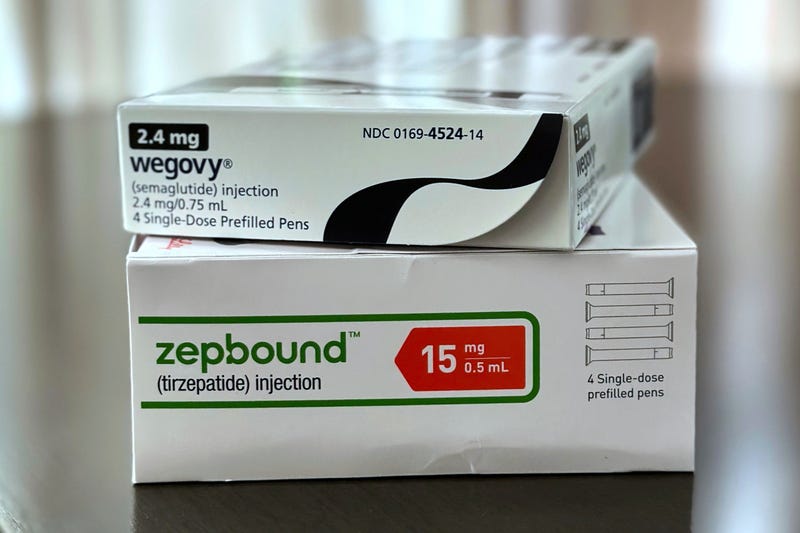
Novo Nordisk is chopping prices again for Wegovy, but doctors say the expense will remain challenging for patients without insurance.
The drugmaker said Monday that it has started selling higher doses of the injectable obesity treatment for $349 a month to patients paying the full bill. That’s down from $499, and in line with terms of a drug pricing agreement outlined earlier this month by President Donald Trump’s administration.
Novo also started a temporary offer of $199 a month for the first two months of low doses of Wegovy and the drug’s counterpart for diabetes, Ozempic. The new pricing will be available at pharmacies nationwide, through home delivery and from some telemedicine providers.
Rival Eli Lilly also plans price breaks for its weight-loss drug Zepbound once it gets a new, multi-dose pen on the market. Lilly has said it will sell a starter dose of Zepbound for $299 a month and additional doses at up to $449. Both represent $50 reductions from current prices for sales directly to patients.
Obesity treatments like Zepbound and Wegovy have soared in popularity in recent years. Known as GLP-1 receptor agonists, the drugs work by targeting hormones in the gut and brain that affect appetite and feelings of fullness.
In clinical trials, they helped people shed 15% to 22% of their body weight — up to 50 pounds or more in many cases. But affordability has been a persistent challenge for patients.
A recent poll by the nonprofit KFF found that about half of the people who take the treatments say it was hard to afford them.
Both Lilly and Novo announced price cuts earlier this year that brought the cost of higher doses of their treatments down to around $500 a month.
Previous research has shown that people have difficulty paying for a medication when the cost rises above $100 per month, said Stacie Dusetzina, a Vanderbilt University Medical Center professor and prescription drug pricing expert.
She said Novo's new prices are “not going to really move the needle for a person who doesn’t have a pretty reasonable amount of disposable income.”
Dr. Laura Davisson said the medication would still be unaffordable for patients on Medicaid in states where the government-funded program for people with low incomes doesn’t cover the drug.
The bigger issue is expanding coverage of the treatments, said Davisson, a West Virginia University obesity specialist.
“We’ve had hundreds of people lose coverage over the last couple of years, and we keep seeing more and more insurers drop coverage,” she said, adding that her practice has started a group support program to help those who have lost coverage.
Coverage is slated to improve starting next year for at least one big payer under a deal announced by the Trump administration. The federally funded Medicare program, mainly for people ages 65 and older, will begin covering the treatments for people who have severe obesity and others who are overweight or obese and have serious health problems.
Those who qualify will pay $50 copays for the medicine.
Administration officials also said lower prices for the drugs that they negotiated for Medicare also will be provided for Medicaid programs.
That will help expand coverage, according to Dave Moore, Novo's executive vice president for U.S. operations. He said Medicaid programs in 20 states cover the drug for obesity.
Novo officials expect around 40 million more Americans will gain access to their drug through coverage expansions for Medicaid and Medicare.
Neither Moore nor representatives for Eli Lilly would say whether they plan additional price cuts. Both companies also are seeking approval of pill versions of the drugs, which would come with new prices.
Lilly spokesperson Courtney Kasinger said the company believes obesity treatments should be covered just like those for any other chronic condition.
“We're going to continue to work to improve coverage as much as we can across all channels, all stakeholders,” she said.
___
The Associated Press Health and Science Department receives support from the Howard Hughes Medical Institute’s Department of Science Education and the Robert Wood Johnson Foundation. The AP is solely responsible for all content.